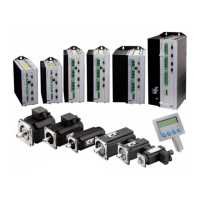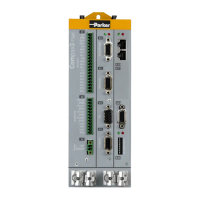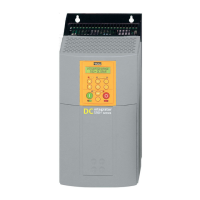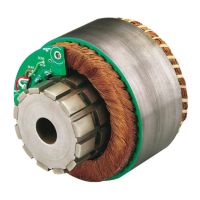Setting up Compax3
C3I12T11
192-120113 N08 C3I12T11 - December 2010
Resonance points and their causes
In this chapter you can read about:
Rotary two mass system ................................................................................................ 282
Linear two mass system ................................................................................................ 283
Toothed belt drive as two mass system ......................................................................... 284
Mechanical system with a resonance point
fARes: Anti resonance frequency
fRes: Resonance frequency
The displayed change of the frequency response (resonance point), has its cause
in a so-called two mass system (caused by the elastic coupling of two masses).
As, upon closer examination, each mechanic coupling shows a certain elasticity, it
is no the question if there is a resonance point, but at which frequency it is and how
well it is attenuated.
Rotary two mass system
The shown system corresponds for instance to a motor with a flywheel coupled via
a shaft. Hereby J1 corresponds to the motor moment of inertia and J2 to the
moment of inertia of the flywheel.

